How an ’03 meeting with Marc Jacobs laid the foundation for Pharrell and LVMH to grow glamour and knock down doors.
On a warm summer night in Paris, the constantly cool Pharrell Williams presented his first full collection with Louis Vuitton.
Almost 4,000 miles from his Virginia Beach birthplace, Skateboard P dropped into his appointment as menswear creative director at the French fashion house as a man on a mission.
Filling the size 12 sneakers of Virgil Abloh, Williams walked the Pont Neuf bridge with the confidence of a veteran and the reverence of a rookie.
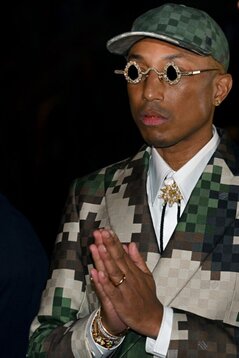
Surrounded by friends, family, and fashion press, it was almost as if Pharrell had been there before.
It’s because he had.
Two decades prior to his directorial debut, Louis Vuitton handpicked the buzzing producer to work on a collaborative capsule of sunglass styles.
Inspired equal parts by Scarface and Biggie Smalls, Williams worked directly with Marc Jacobs to turn Ice Cream dreams into LVMH realities.
In celebration of P’s Paris debut, Boardroom breaks down the business behind his first foray with Louis Vuitton.
Change Clothes
Marc Jacobs, creative director at Louis Vuitton from 1997 to 2013, was guided by the power of collaboration.
As early as 2001, Jacobs had taken the third-party approach by calling in Stephen Sprouse. The New York natives landed on graffiti inspiration, flipping LV’s logo and bag branding entirely on its head.
Not only was this rebellious when walking in a European empire, but Sprouse’s styling also went against everything corporate America stood for in regard to inverting IP.

Jacobs ate it all up, empowering Sprouse to revise the brand’s beloved luggage and accessories in a loud all-over font.
Appalling snobs and speaking to youth revival, it was the same energy as 2017’s Off-White x Air Jordan 1 almost two decades prior. More importantly, the shift took place in a stuffier space and more siloed times.
The imagination and audacity appealed instantly to artists and editors alike.
“The combination of the staid, old-school Vuitton luggage and the unique energy of Sprouse’s most typical, purest work makes both Sprouse and the luggage look somehow fresh,” Vogue’s Tama Janowitz wrote in 2001.
Over time, Sprouse’s LV line grew from a commercial statement to a revered collectible.
Pulling from the same playbook, Jacobs continued to work relentlessly while phoning friends long distance. Next up was Takashi Murakami, a pop artist from Japan.
Revising luggage and logos once again, 2003‘s iconic Monogram Multicolore transcended culture from Kanye West backpacks to Paris Hilton purses.
Jacobs was onto something and steadfast in moving the needle.
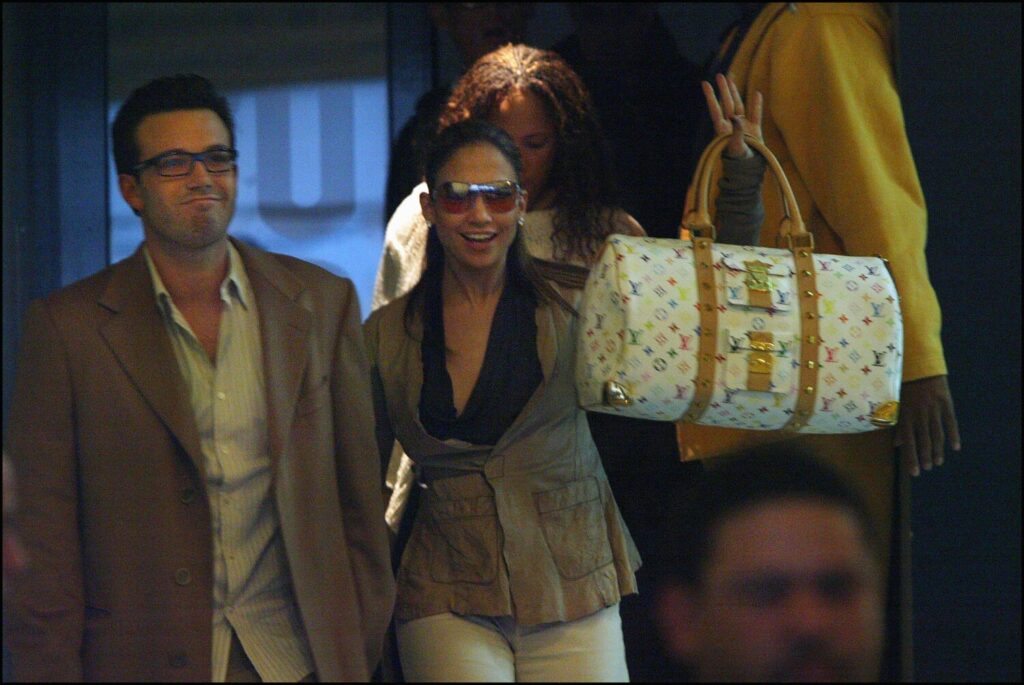
“I thought the way forward for Louis Vuitton was to collaborate with other creatives,” Jacobs recently told The New York Times. “It didn’t matter to me whether they were from music or art or other fashion designers, whether it was Stephen Sprouse, Takashi Murakami, or Pharrell.”
When it came to luxury leather goods, Jacobs cracked the code on how to reinvent classics through disruptive design that was fresh, collaborative, and commercially viable.
His next frontier was eyewear. His first phone call was Pharrell.
A New Lens
Born and raised in New York City, Marc Jacobs grew up amid the advent of American pop art and the birth of hip-hop.
In 2003, no one lived in that intersection more than Pharrell Williams. By that moment, Pharrell was the most trusted man in music, having co-produced smash hits for Jay-Z, Justin Timberlake, and Britney Spears.
Serving as one-half of The Neptunes, Williams was behind nearly half of the songs played on American radio and a fifth of the favorites on British airwaves in the early aughts.
He produced Prince remixes and *NSYNC singles. He led album rollouts for No Doubt and Jadakiss.
Pharrell was someone you could count on if you wanted your record to ring off and ring it up.
Inspired by his aesthetic, Jacobs rang Williams, calling for a meeting that would lead to a line of eyewear.
“Marc had seen a few pictures of me in sunglasses,” Williams told Women’s Wear Daily in 2004. “He wanted to know what my take on sunglasses would be like for Louis Vuitton.”
In an instant, the keys were tossed to Skateboard P.
“He pretty much let me go into my own world,” Williams continued. “I thought that was great. At the end of the day, he is Marc Jacobs and it is Louis Vuitton, and who am I for that matter?”
Who was Pharrell for that matter?
Topping the charts with his space-age sounds and falsetto singing voice, Williams was pop culture and counter-culture all at once.
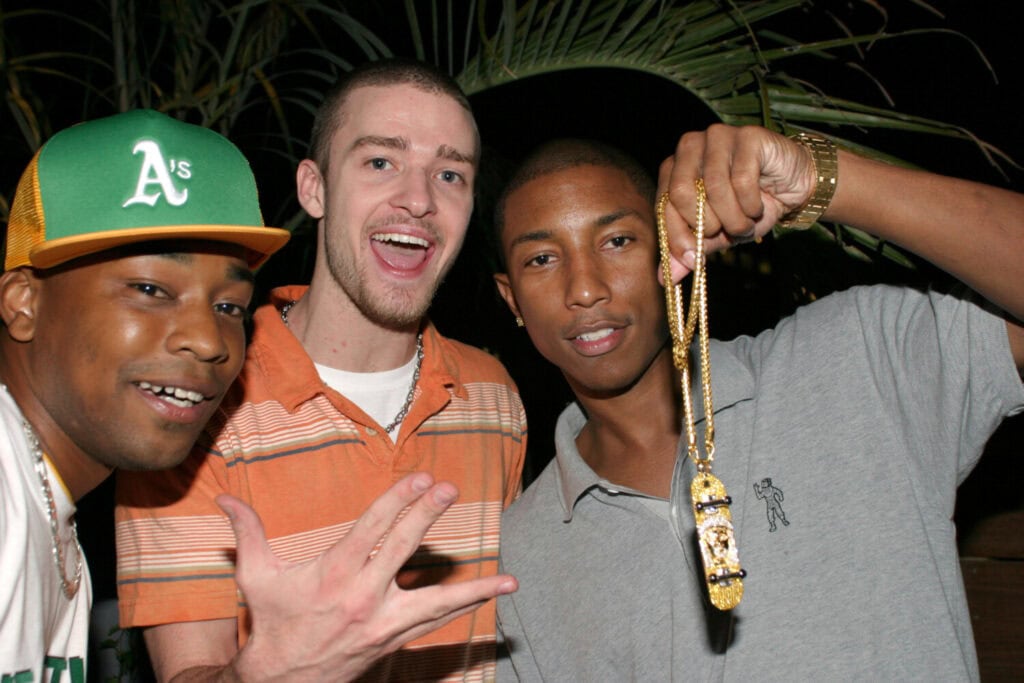
Riding a similar creative current to Sprouse and Murakami before, Jacobs asked Williams and A Bathing Ape founder NIGO to bring new energy to eyewear at Louis Vuitton — a space the house played in but made less noise.
If early examples of energy from working with others was any indication, teaming with Williams and NIGO could be lucrative and expand another category.
Coming on the heels of collaborative collections with Sprouse and Murakami, LVMH’s operating income grew 11% in 2004.
Each entry from Sprouse and Murakami made noise by being rebellious and fresh. Through Pharrell, the idea of working with a musician — a hip-hop artist at that — could be radical and rewarding.
At the time, fashion houses were rarely calling rap recording artists to attend their fashion shows, let alone design their products.
With Pharrell came risk, but also a resume.
Having scored sneaker commercials for Nike Basketball and receiving his own Dunks, Pharrell was just beginning to leverage his cultural cachet in fashion to that of formal apparel deals with his newfound fame.
In the early aughts, Pharrell’s relationship with NIGO increased exposure to A Bathing Ape, providing the footing for a formal partnership that birthed Billionaire Boys Club in 2003.
“NIGO is like the glue to my ideas, but that’s not even giving it enough justice,” Pharrell said around 2005.
Forging ahead, BBC birthed Ice Cream — an adjacent apparel line with footwear licensed through Reebok. In a few short years, Pharrell was moving jeans in Japan and sneakers at Finish Line.
Prior to P’s path, Run DMC had an Adidas deal in the ’80s while the Beastie Boys brought esteem to XLARGE t-shirts in the ’90s.
In the early ’00s, Pharrell was living larger in each space and doing so internationally.
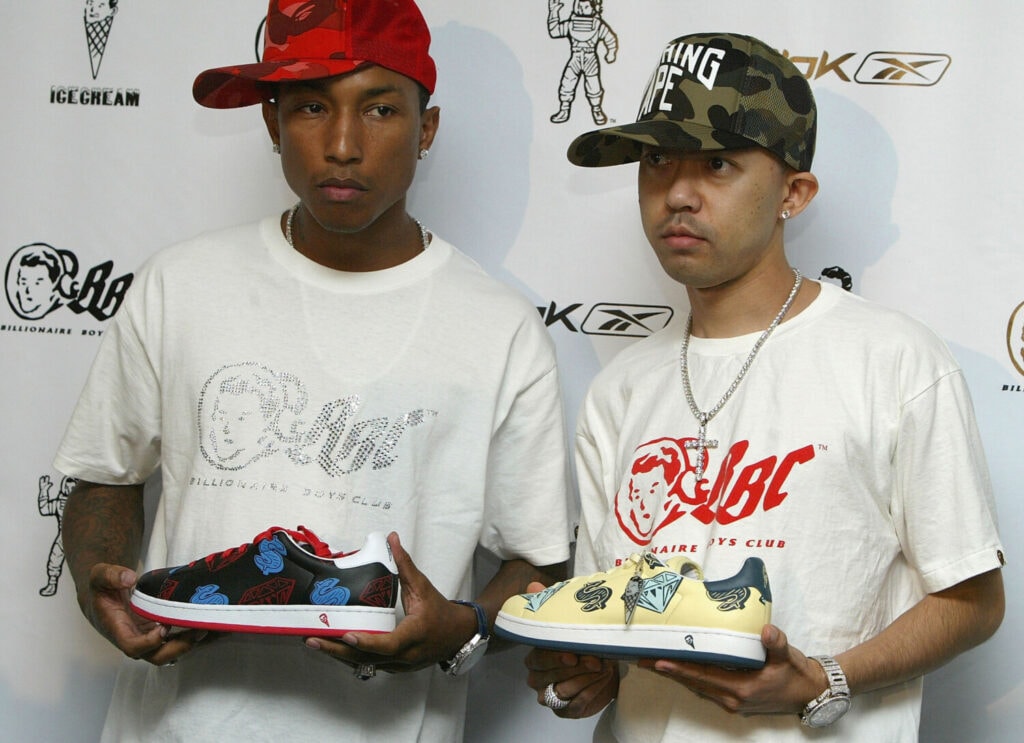
The radio resident finally had the backing of brands to create new worlds. Reebok was the first to take a big buy in on Pharrell.
The English sportswear company had just recorded $3.2 billion in sales in 2004, led largely by Allen Iverson but entering new markets by way of Williams.
Next was the Marc Jacobs-led Louis Vuitton. At that time, LVMH had soared to roughly $16.8 billion in annual sales. Through Pharrell, Marc Jacobs could elevate eyewear through collaboration in the same way he helped reinvent handbags.
The opportunity — and backing — was not lost on the forever faithful Pharrell.
Leveling Up
Pharrell Williams has never been in awe of Pharrell Williams.
“You have to understand, I am just a regular dude,” Williams told Vogue in 2004. “At the end of the day, this is all an incredible dream come true.”
When working with Louis Vuitton, NIGO, and Marc Jacobs, Pharrell saw sunglasses as a means to exude quiet confidence through loud, lavish luxury.

In interviews, the collaborators considered sunglasses a steroid of sorts to persona and personality.
Pharrell’s Louis Vuitton Millionaire model of sunglasses symbolized aspiration and arrival. They came in an array of bold hues, detailed in gold and going for $300 to $500 at retail.
“I told them specifically what pairs I wanted, and how I wanted the pairs to look,” Williams told WWD in 2004. “We discussed the weight, the glasses, and a lot of details.”
For Pharrell the designer, the focus was quality. For Pharrell the man, the opportunity was everything.
“The whole project is a total reflection of them giving me a chance,” Williams continued. “And I thought it was just great.”
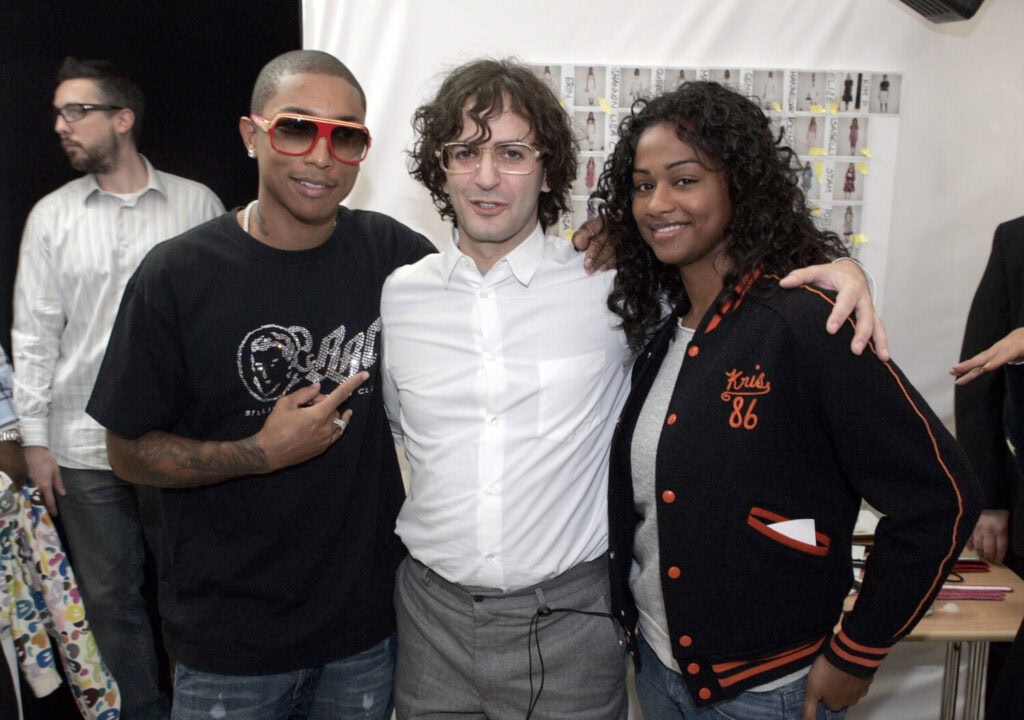
Said to be a 50/50 blend between Tony Montana and The Notorious B.I.G. in oversized and outlandish aesthetic, the shades were instantly a hit and status symbol in hip-hop.
Wearing a pair of Millionaires was C-suite status without being boring. However, Pharrell’s early ambition was less about being an exec and more about being a student. In working with LVMH he now had the chance to learn from the best in the biz.
“Under the tutelage of Marc? He’s an amazing guy. He’s been so gracious and so generous with his intelligence and direction,” Williams told the AP in 2008. “I’ve learned a lot being here. Vuitton for me is a school.”
While Vuitton served Skateboard P, the exchange was mutual.
Making the most of the storied history of eyewear in hip-hop and the $80 billion luxury goods market in the early aughts, sunglasses proved the perfect value proposition for Pharrell and Louis Vuitton.
With high fashion shades said to have a 64% profit margin in years past, the item of choice was both safe and statement.
It was an entry-level look into an aspirational world that is now run by hip-hop icons with fewer borders than before.

“Sunglasses are basically a reflection of how you feel,” Williams told WWD in 2004. “They encourage you to really be you. It’s kind of like a steroid to your personality.”
From Kool Mo Dee to D4L, sunglasses long held a place in hip-hop expression — as did Louis Vuitton, if never at once.
Dating back to the days of Dapper Dan, Slick Rick, and Rakim, Louis Vuitton has long been loved by hip-hop in spirit and aesthetic.
Through Pharrell, the longstanding relationship became a profitable partnership for the Bronx-born genre and French fashion house.
It was good business for all and a sign of more to come.
Run it Back
Marc Jacobs cracked a code when he brought collaboration to Louis Vuitton.
For 15 years, Murakami’s imagination sold Monogram Multicolore leather goods in abundance.
Less than a decade after its arrival, Sprouse was given a second at-bat, hitting home runs with the same font scoring everything from shirts to scarves.
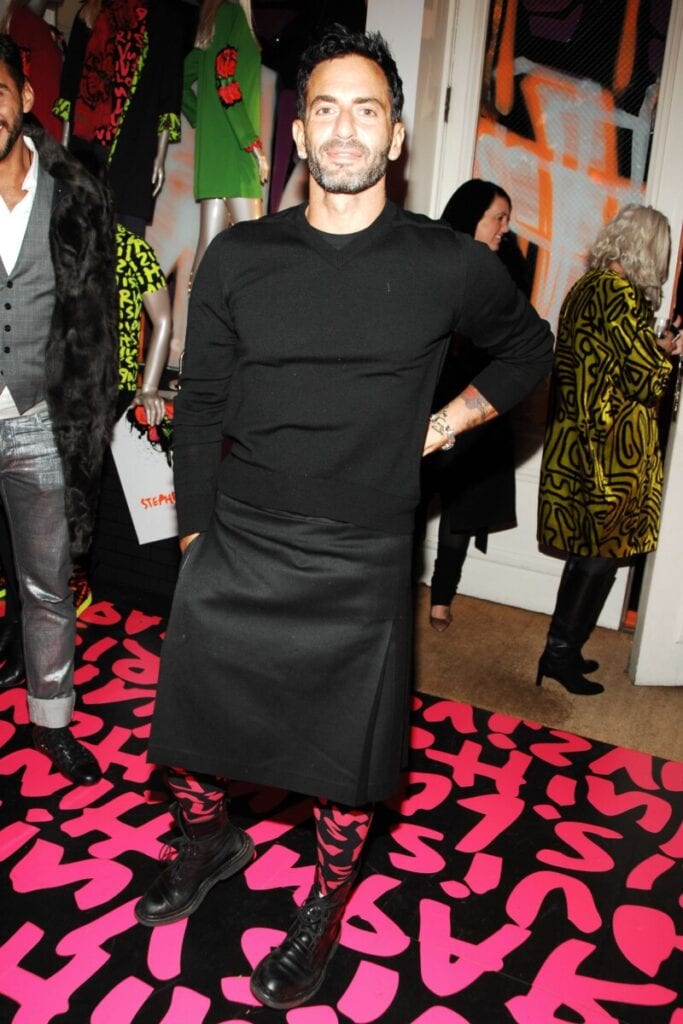
Hip-hop artists loved Louis Vuitton with a feeling few competitors could copy. Luggage made by Murakami graced Summer Jam stages while everyone from Fabolous to Wale wore Sprouse styles.
Whether sitting sideline at Fashion Week or working in-house with Marc Jacobs, Pharrell was hip to the shape-shifting ability of Louis Vuitton.
“Though it’s a company with a very rich history and lots of tradition, it’s very open to new ideas,” Williams wrote in 2012’s Places and Spaces I’ve Been. “You can play around with it — have fun the way Marc does with the bags and his collaborations with artists.”
Jacobs, someone Pharrell constantly calls one of his heroes, saw how joyful high fashion could be when working with the right people at the right place.
“For me, Louis Vuitton is very fun and very modern,” Williams wrote.
In 2013, Jacobs left his position at Louis Vuitton while Williams continued to work with everyone from Chanel to Tiffanys.
The 2010s would double down on ideals of collaboration and high-fashion-meets-hip-hop partnerships, completely changing the landscape of style and the inspiration it recognizes.
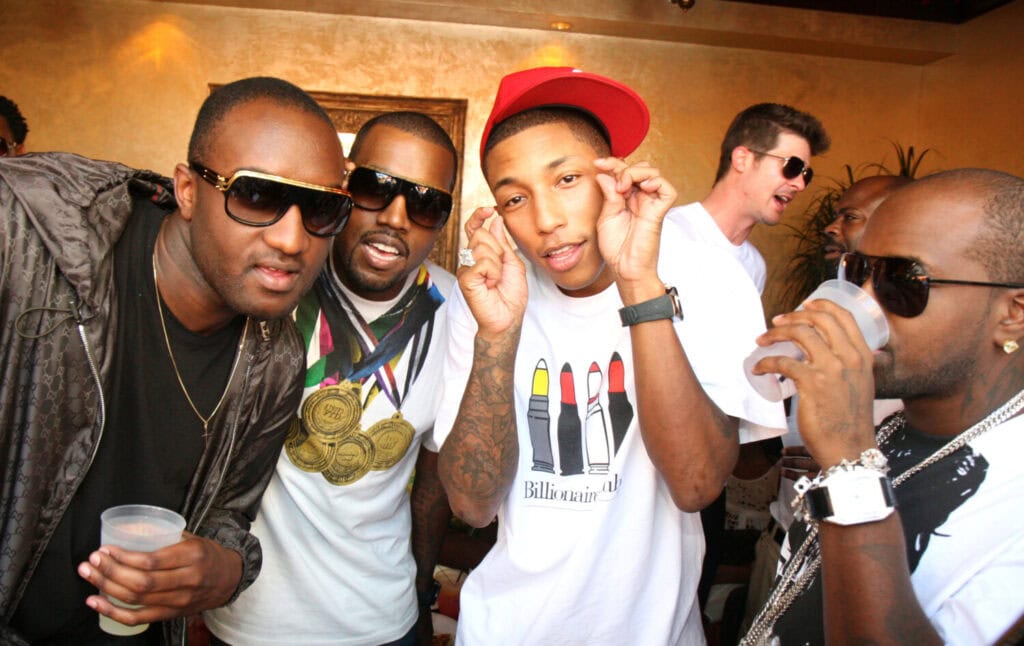
Pharrell was first to have a seat at the table in some respects, taking notes in the moment but always cognizant of what could be next.
When working with Jacobs in the ’00s, it’s clear Pharrell was listening intently. However, it’s uncertain if taking a title at LVMH was ever on his vision board.
Though the likes of Ye, A$AP Rocky, and Virgil Abloh all deserve top-tier credit for merging the worlds of hip-hop and high fashion at the highest level, it was Skateboard P who hopped the fences first.
Just the same, it was Marc Jacobs who extended his hand.
“He was just so incredibly generous,” Pharrell told The New York Times’s Jon Caramanica in June. “To give me that opportunity when nobody had ever given any of us an opportunity to be creative.”
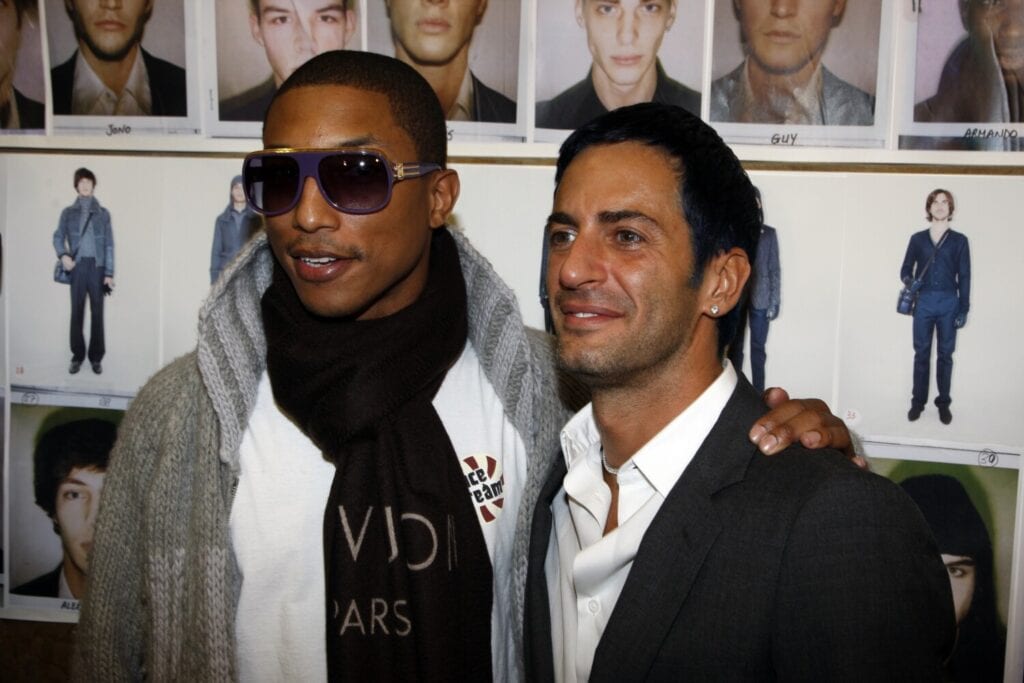
Fearlessly fluid yet uncommonly humble, Pharrell maneuvered the apparel industry in both hemispheres over multiple decades.
Save a Hype Williams music video or interlude on a Gangsta Grillz mixtape, he’s always walked the walk more than he’s talked the talk.
Having an ally in Marc Jacobs and a superfan in Virgil Abloh, Pharrell’s lack of Parsons pedigree may have caused concerns around fashion’s elite when appointed menswear creative director at Louis Vuitton earlier this year.
Earlier this week, his formal Fashion Week debut definitely heard more cheers than jeers.
What one didn’t hear was Pharrell making it about himself.
For over 30 years, Skateboard P has made a career of owning rooms he wasn’t supposed to be in, never being the loudest but always being the most curious.
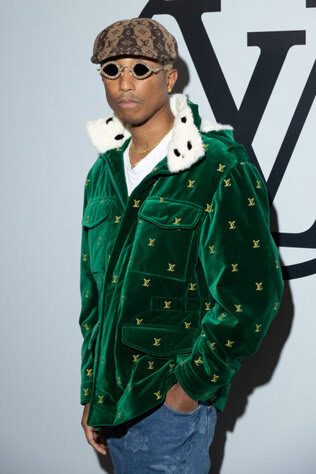
It all started nearly 20 years ago when Williams made the most of his first high fashion foray.
“The whole project is a total reflection of them giving me a chance,” Pharrell told WWD in 2004.
Through Marc Jacobs and Millionaire shades, Pharrell influenced eyewear at Louis Vuitton as an entire category.
All these years later, he leads their entire empire from a menswear standpoint — a major cog of a conglomerate now valued at over $500 billion.
The storied sunglasses serve as a metaphor for his meteoric rise now more than ever.
“I guess it’s American ambition,” Williams continued to WWD in 2004. “These sunglasses are not about the struggle but about the celebration of making it in this world. Overall they have this statement: ‘I am going places.’”
From VA to Paris, ‘03 to infinity, Pharrell Williams is still going places — and taking hip-hop with him.